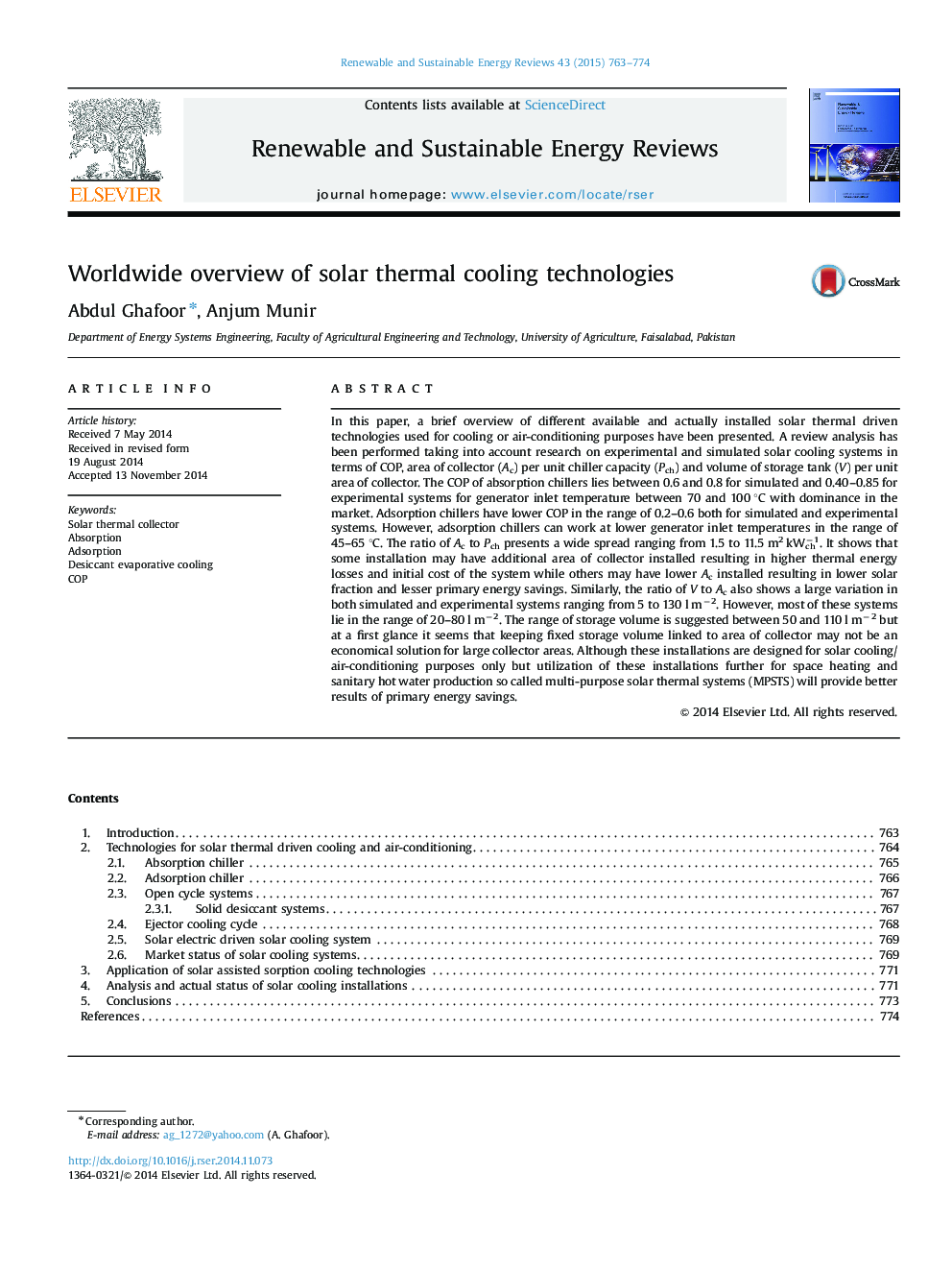| Article ID | Journal | Published Year | Pages | File Type |
|---|---|---|---|---|
| 8117928 | Renewable and Sustainable Energy Reviews | 2015 | 12 Pages |
Abstract
In this paper, a brief overview of different available and actually installed solar thermal driven technologies used for cooling or air-conditioning purposes have been presented. A review analysis has been performed taking into account research on experimental and simulated solar cooling systems in terms of COP, area of collector (Ac) per unit chiller capacity (Pch) and volume of storage tank (V) per unit area of collector. The COP of absorption chillers lies between 0.6 and 0.8 for simulated and 0.40-0.85 for experimental systems for generator inlet temperature between 70 and 100 °C with dominance in the market. Adsorption chillers have lower COP in the range of 0.2-0.6 both for simulated and experimental systems. However, adsorption chillers can work at lower generator inlet temperatures in the range of 45-65 °C. The ratio of Ac to Pch presents a wide spread ranging from 1.5 to 11.5 m2 kWchâ1. It shows that some installation may have additional area of collector installed resulting in higher thermal energy losses and initial cost of the system while others may have lower Ac installed resulting in lower solar fraction and lesser primary energy savings. Similarly, the ratio of V to Ac also shows a large variation in both simulated and experimental systems ranging from 5 to 130 l mâ2. However, most of these systems lie in the range of 20-80 l mâ2. The range of storage volume is suggested between 50 and 110 l mâ2 but at a first glance it seems that keeping fixed storage volume linked to area of collector may not be an economical solution for large collector areas. Although these installations are designed for solar cooling/air-conditioning purposes only but utilization of these installations further for space heating and sanitary hot water production so called multi-purpose solar thermal systems (MPSTS) will provide better results of primary energy savings.
Related Topics
Physical Sciences and Engineering
Energy
Renewable Energy, Sustainability and the Environment
Authors
Abdul Ghafoor, Anjum Munir,
